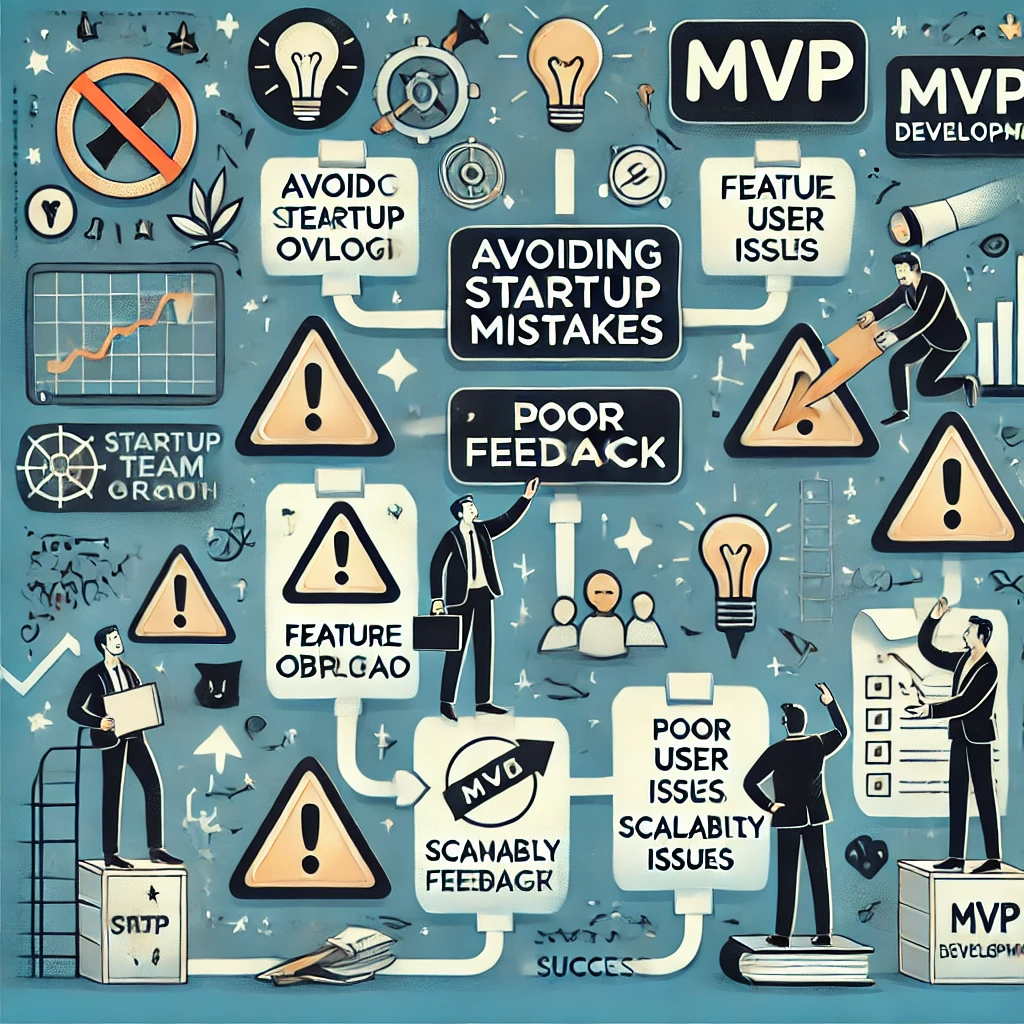5 Common Startup Mistakes and How to Avoid Them in Your MVP

Launching a startup is an exciting but challenging journey. Every founder dreams of taking their idea to market, gaining traction, and scaling up to success. However, in the rush to bring a product to life, many startups make mistakes in the early stages—especially when developing their Minimum Viable Product (MVP). An MVP is meant to validate your business idea and offer just enough features to attract early users, but if handled poorly, it can lead to wasted time, money, and missed opportunities.
At Omnipreneur, we work with entrepreneurs to ensure their MVP is designed strategically and avoids common pitfalls that could derail their startup’s growth. In this post, we’ll explore five common mistakes startups make with their MVP and provide tips on how to avoid them.
1. Building Too Many Features
One of the most frequent mistakes startups make is trying to cram too many features into their MVP. It’s easy to get carried away thinking about all the possibilities your product could offer, but adding too many features can dilute the focus and delay the launch. Remember, the purpose of an MVP is to test the waters, not to build a full-scale product.
How to Avoid It:
Focus on the core functionality of your product. What is the primary problem your product solves, and what features are necessary to address that problem? Identify the must-have features and leave the nice-to-haves for later iterations. By keeping your MVP simple, you can launch faster, reduce development costs, and get valuable feedback early.
2. Not Understanding Your Target Audience
Another common mistake is failing to understand the needs and preferences of your target audience. If you don’t have a clear understanding of who your early adopters are, you may end up building features that don’t resonate with them or solve a problem they don’t have.
How to Avoid It:
Take the time to conduct market research before building your MVP. Understand your audience’s pain points, behaviors, and needs. Use surveys, interviews, and competitor analysis to validate your assumptions and ensure you’re building something that will genuinely add value to your users. This insight will help you prioritize features and create a product that your customers will actually use.
3. Ignoring User Feedback
Once your MVP is launched, it’s essential to gather feedback from your early users. Unfortunately, some startups make the mistake of ignoring this feedback and continue developing the product based on their initial assumptions, even if users suggest otherwise.
How to Avoid It:
Treat your MVP as an experiment and your users as valuable sources of feedback. Use analytics tools and surveys to collect data on how users are interacting with your product. Listen to their suggestions, and be prepared to pivot or adjust your features based on their needs. The goal of an MVP is to validate your business idea through real-world feedback, so don’t overlook the insights your users provide.
4. Neglecting Scalability and Performance
In the rush to get your MVP to market, it’s tempting to focus only on getting it done quickly, neglecting performance and scalability. While an MVP doesn’t need to be perfect, ignoring potential growth can result in technical debt that hinders your startup’s ability to scale when the time comes.
How to Avoid It:
From the outset, design your MVP with scalability in mind. This doesn’t mean over-engineering your product, but it does mean choosing technologies, frameworks, and architectures that allow for future growth. For example, using cloud infrastructure or modular software design can help ensure that your product can handle increased demand as your startup grows.
5. Skipping Validation and Testing
Some startups make the mistake of launching their MVP without thoroughly testing it. If your MVP is buggy or unreliable, it can lead to poor user experiences, frustrated customers, and a damaged reputation. While an MVP is meant to be lean, it should still function smoothly.
How to Avoid It:
Make sure to test your MVP before launch. Run internal tests to catch any critical bugs and ensure basic functionality is in place. It’s also a good idea to launch a beta version with a small group of users to identify any issues before opening it up to a larger audience. Even though your MVP doesn’t need to be perfect, it should offer a stable, reliable user experience.
Conclusion: Focus on What Matters
Building an MVP is about more than just launching quickly—it’s about launching strategically. By focusing on your core features, understanding your target audience, listening to user feedback, planning for scalability, and validating your product through testing, you can avoid common mistakes that derail many startups.
At Omnipreneur, we help entrepreneurs navigate the challenges of MVP development and guide them toward building scalable, user-centered products. Whether you’re just starting or looking to refine your existing MVP, our team is here to support your journey to success.
Ready to develop a successful MVP? Contact us today to learn how we can help you avoid common startup pitfalls and bring your vision to life.